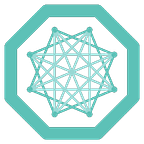MONAI continues its Pathology integration and defines a new MONAI Bundle Model Sharing Standard
Project MONAI releases MONAI Core v0.9, MONAI Label v0.4, MONAI Deploy App SDK v0.4, and MONAI Deploy Informatics Gateway v0.2.
MONAI focuses on two main topics for these releases, MONAI for Pathology and MONAI Bundles.
First, MONAI is helping create a starting point for Pathologists, Data Scientists, and Researchers who want to get started using Deep Learning in their Pathology workflow. Currently, Deep Learning is not typically used in Pathology for various reasons, including lack of integration into the typical workflow and general performance limitations.
Project MONAI is helping address these issues with transformers, data loaders, and network architectures in MONAI Core and integration into Pathology Viewers to help with AI-Assisted Annotation with MONAI Label.
Next, the MONAI Bundle format defines a portable and standardized packaging format for storing and sharing models. By creating a standard layout and supporting MONAI Bundles throughout each framework, you’ll be able to seamlessly utilize MONAI bundles from annotation, training, and deployment.
MONAI Core v0.9
Highlights include:
- MONAI Bundle
- Object Detection in Medical Images
- SWIN Transformers and SWIN UNETR Architecture
- DeepEdit and NuClick for Pathology
- MetaTensor API Preview
MONAI Bundles include all the information necessary for a model development life cycle, including training, fine-tuning, and inference. The MONAI Bundle API is defined within the `monai.bundle` module namespace and is an easy-to-use API that helps separate the deep learning hyperparameter settings from code and helps to decouple the component details from the higher-level learning paradigms.
This release also contains the essential components for object localization and categorization workflows. These modules include handling 2D and 3D bounding boxes, network blocks and architectures of RetinaNet, and common utility modules.
This release has included or updated three new networks, including SWIN UNETR, DeepEdit, and NuClick. SWIN UNETR is a state-of-the-art transformer model inspired by the previous success of the UNETR model included in a prior release of MONAI Core. And NuClick is a CNN-based framework for interactive segmentation of objects in histology images and is used as a sample application with MONAI Label.
Last, a preview release of the MetaTensor API is being introduced. The MetaTensor is a refactoring of the data representation in MONAI to include the metadata associated with the primary imaging modalities and is essential in many biomedical imaging applications.
For full release notes, check out the MONAI Core release notes.
MONAI Label v0.4
Highlights include:
- Pathology Sample Applications for Segmentation Nuclei, DeepEdit Nuclei, and NuClick
- DSA, QuPath, and CVAT Integration
- GraphCut and GMM-based methods for Scribbles
Three new Pathology based sample applications that can be used as an easy starting point or as the basis for your custom annotation application include Segmentation Nuclei, DeepEdit Nuclei, and NuClick.
MONAI Label now integrates with three pathology viewers, including QuPath, Digital Slide Archive or DSA, and CVAT. These allow you to quickly choose your favorite viewer and start using MONAI Label with it today.
If you’re interested in contributing feedback to the direction of our Pathology work in MONAI, we’ve created a survey to help understand the community’s needs.
For full release notes, check out the MONAI Label release notes.
MONAI Deploy v0.4
Highlights include:
- MONAI Bundle inference operator
- Multi-Model support
With the introduction of MONAI Bundles through all of the Project MONAI frameworks, MONAI Deploy App SDK is making it easy to take those MONAI Bundles and quickly create your own AI Application. MONAI Bundle Operator enables using a MONAI-trained model in an inference app with minimal or no coding. The Bundle inference operator is enhanced to support both in-memory and file I/O for edge cases where app developers/model trainers only need to test the inference logic with the single operator app.
We’ve also tested and confirmed multi-model support. Each bundle operator is designed to support a single model bundle, but the application can have multiple model bundles named uniquely.
For full release notes, check out the MONAI Deploy release notes.
With these new releases for Project MONAI, MONAI continues to expand into new fields like Pathology while also making it easier to create reproducible and standardized ways to share Medical AI Models. These efforts continue to create an environment for data scientists, researchers, clinicians, and pathologists to integrate deep learning into their workflows.
